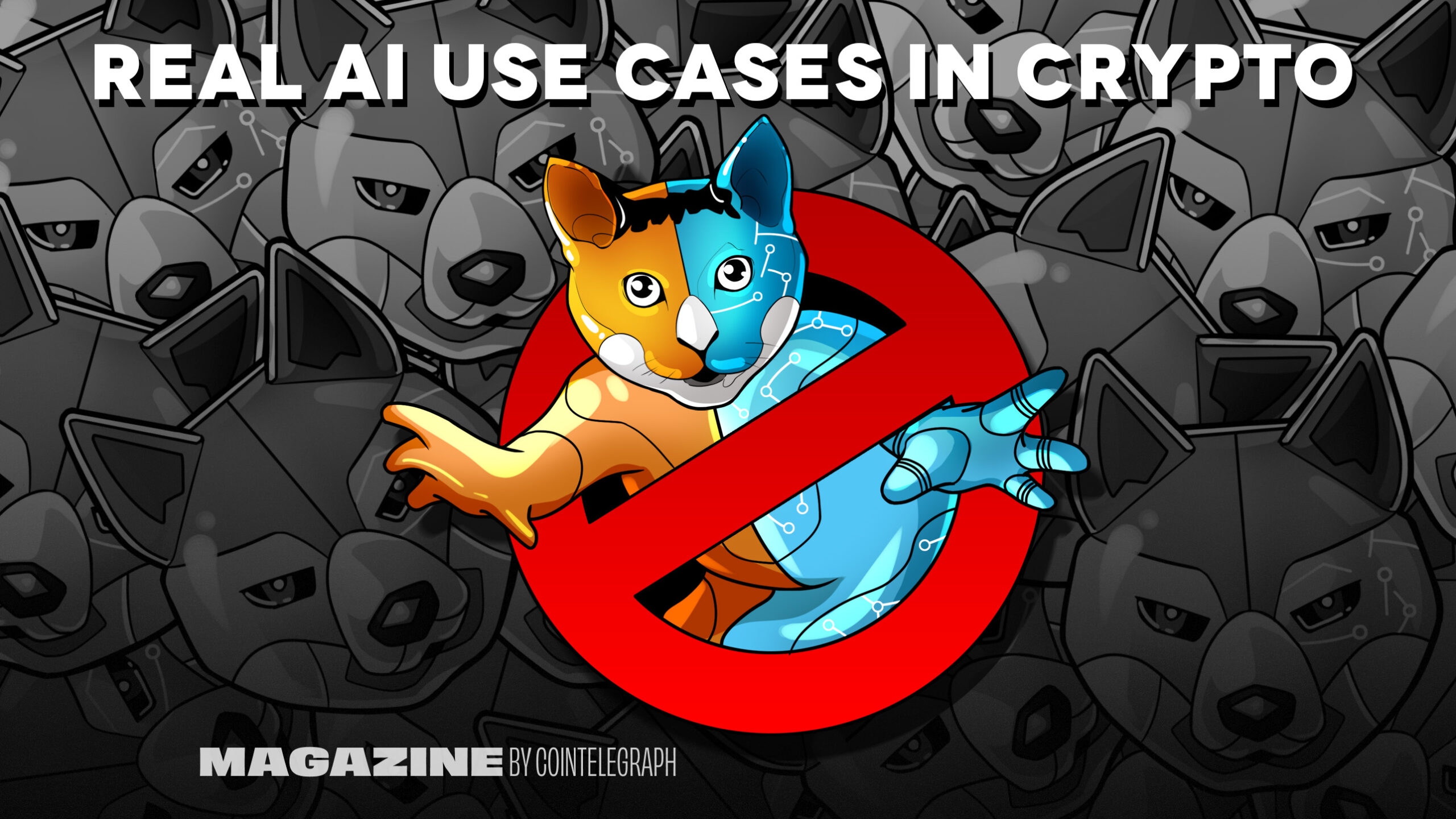

We’re rolling out one real use case for AI and crypto every day this week — together with the reason why you shouldn’t essentially imagine the hype. As we speak: How blockchain can struggle the fakes.
Generative AI is extraordinarily good at producing faux images, faux letters, faux payments, faux conversations — faux the whole lot. Close to co-founder Illia Polosukhin warns that quickly, we gained’t know which content material to belief.
“If we don’t resolve this popularity and authentication of content material (downside), shit will get actually bizarre,” Polosukhin explains. “You’ll get telephone calls, and also you’ll assume that is from anyone you already know, nevertheless it’s not.”
“All the photographs you see, all of the content material, the books can be (suspect). Think about a historical past ebook that children are finding out, and actually each child has seen a special textbook — and it’s making an attempt to have an effect on them in a particular method.”
Blockchain can be utilized to transparently hint the provenance of on-line content material in order that customers can distinguish between real content material and AI-generated pictures. Nevertheless it gained’t type out fact from lies.
“That’s the fallacious tackle the issue as a result of folks write not-true stuff on a regular basis. It’s extra a query of if you see one thing, is it by the individual that it says it’s?” Polosukhin says.
“And that’s the place popularity programs are available in: OK, this content material comes from that creator; can we belief what that creator says?”
“So, cryptography turns into an instrument to make sure consistency and traceability and you then want popularity round this cryptography — on-chain accounts and file preserving to really be sure that ‘X posted this’ and ‘X is working for Cointelegraph proper now.’”
Critically, do not belief something you see on-line anymore. Faking stuff is trivial. You can’t inform the distinction. There aren’t any watermarks, and watermarks might be defeated simply. This genie will not be going again within the bottle.
— Ethan Mollick (@emollick) November 27, 2023
If it’s such an ideal concept why isn’t anybody doing it already?
There are a number of present provide chain tasks that use blockchain to show the provenance of products in the true world, together with VeChain and OriginTrail.
Nonetheless, content-based provenance has but to take off. The Trive Information mission aimed to crowdsource article verification through blockchain, whereas the Po.et mission stamped a clear historical past of content material on the blockchain, however each are actually defunct
Extra lately, Reality Protocol was launched, utilizing a mixture of AI and Web3 expertise in an try and crowdsource the validation of stories. The mission joined the Content material Authenticity Initiative in March final yr
When anyone shares an article or piece of content material on-line, it’s first routinely validated utilizing AI after which fact-checkers from the protocol got down to double-check it after which file the knowledge, together with timestamps and transaction hashes, on-chain.
Learn additionally
Options
Loopy outcomes when present legal guidelines utilized to NFTs and the metaverse
Options
Crypto mass adoption can be right here when… [fill in the blank]
“We don’t republish the content material on our platform, however we create a everlasting, on-chain file of it, in addition to a file of the fact-checks performed and the validators for a similar,” founder Mohith Agadi advised The Decrypting Story.
And in August, international information company Reuters ran a proof-of-concept pilot program that used a prototype Canon digicam to retailer the metadata for images on-chain utilizing the C2PA commonplace.
It additionally built-in Starling Lab’s authentication framework into its image desk workflow. With the metadata, edit historical past and blockchain registration embedded within the {photograph}, customers can confirm an image’s authenticity by evaluating its distinctive identifier to the one recorded on the general public ledger.
Educational analysis within the space is ongoing, too.
Why did @FactProtocol select blockchain expertise to construct a decentralized fact-checking system? A thread 🧵👇
1. Tamper-Proof Information:
Blockchain’s immutability ensures that fact-checking information on Reality Protocol can’t be altered or tampered with, offering a safe and… pic.twitter.com/tEOrl4Us4o
— Reality Protocol (@FactProtocol) November 21, 2023
Is blockchain wanted?
Technically, no. One of many points hamstringing this use case is that you simply truly don’t want blockchain or crypto to show the place a chunk of content material got here from. Nonetheless, doing so makes the method rather more sturdy.
So, whilst you may use cryptographic signatures to confirm content material, Polosukhin asks how the reader might be sure it’s the proper signature? If the secret is posted on the originating web site, somebody can nonetheless hack that web site.
Web2 offers with these points through the use of trusted service suppliers, he explains, “however that breaks on a regular basis.”
“Symantec was hacked, they usually have been issuing SSL certificates that weren’t legitimate. Web sites are getting hacked — Curve, even Web3 web sites are getting hacked as a result of they run on a Web2 stack,” he says.
“So, from my perspective, not less than, if we’re trying ahead to a future the place that is utilized in malicious methods, we’d like instruments which can be truly resilient to that.”
Learn additionally
Options
Ought to crypto tasks ever negotiate with hackers? Most likely
Options
Information to real-life crypto OGs you’d meet at a celebration (Half 2)
Don’t imagine the hype
Individuals have been discussing this use case for blockchain to struggle “disinformation” and deep fakes lengthy earlier than AI took off, and there was little progress till lately.
Microsoft has simply rolled out its new watermark to crack down on generative AI fakes being utilized in election campaigns. The watermark from the Coalition for Content material Provenance Authenticity is completely connected to the metadata and reveals who created it and whether or not AI was concerned.
The New York Occasions, Adobe, the BBC, Truepic, Washington Publish and Arm are all members of C2PA. Nonetheless, the answer doesn’t require the usage of blockchain, because the metadata might be secured with hashcodes and licensed digital signatures.
That stated, it may also be recorded on blockchain, as Reuter’s pilot program in August demonstrated. And the attention arm of C2PA is named the Content material Authenticity Initiative, and Web3 outfits, together with Rarible, Reality Protocol, Livepeer and Dfinity, are CAI members flying the flag for blockchain.
Additionally learn:
Actual AI use circumstances in crypto, No. 1: The very best cash for AI is crypto
Actual AI use circumstances in crypto, No. 2: AIs can run DAOs
Actual AI use circumstances in crypto, No. 3: Sensible contract audits & cybersecurity
Subscribe
Probably the most partaking reads in blockchain. Delivered as soon as a
week.
Andrew Fenton
Primarily based in Melbourne, Andrew Fenton is a journalist and editor protecting cryptocurrency and blockchain. He has labored as a nationwide leisure author for Information Corp Australia, on SA Weekend as a movie journalist, and at The Melbourne Weekly.
Comply with the creator @andrewfenton




















